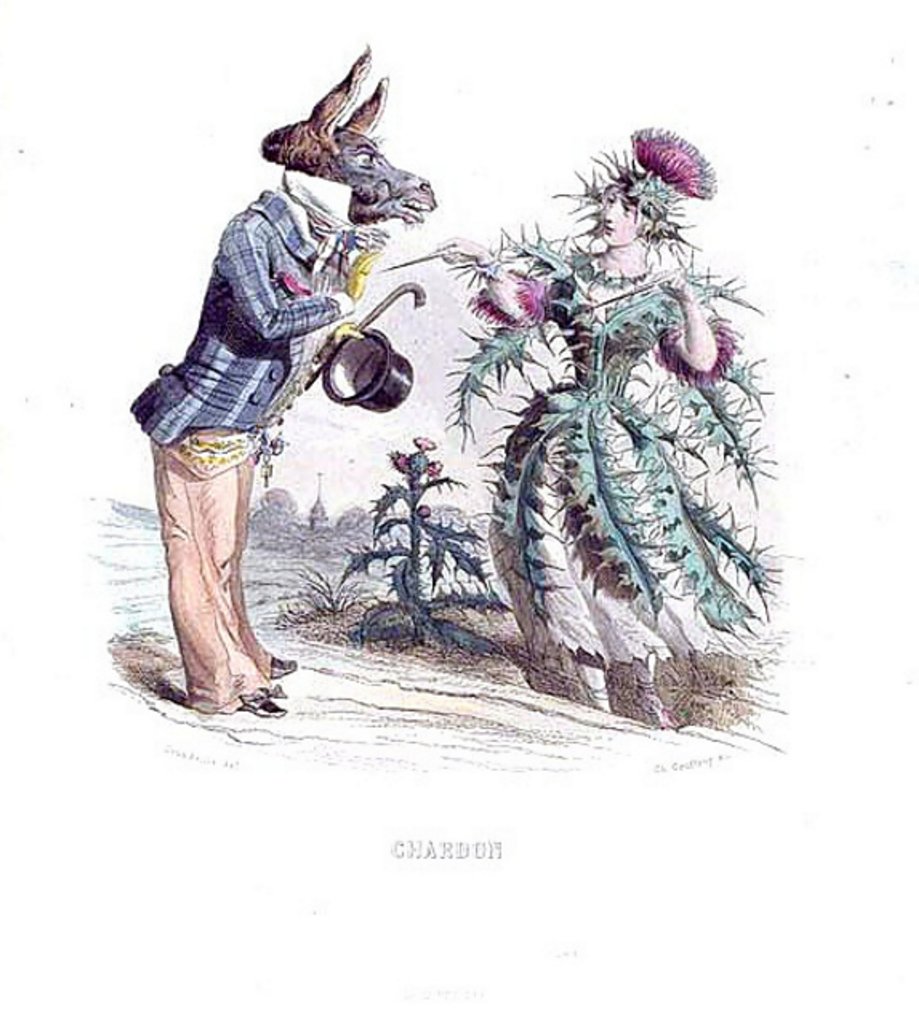Here are the things that would make me hate knitting this chart, as it was originally published:
1. It's intended to be knit flat. Yup. Our friends in England love stranded colorwork, but they sometimes expect us to knit it flat, which would mean purling back in pattern, which requires us to read our charts in reverse every other row. Eeewwwwww. And stranded colorwork, as a fabric, likes to get really arsed up when it's knit flat, unless you know and implement some pretty extreme maneouvers to compensate. When we knit our stranded colorwork in the round, as God intended, all these issues are completely erased.
2. While I'm on the subject (and dangerously close to ranting), I'd like to state for the good of the order: THIS IS STRANDED COLORWORK, NOT FAIR ISLE KNITTING. Sorry for yelling but I would expect the staff of Rowan, who are actually IN Great Britain, to exhibit a better understanding of their own indigenous knitting traditions. They actually call it Fair Isle in the pattern text. It's not Fair Isle unless it obeys these (and other) rules:
A. Fair Isle stranded colorwork is knit in the round. Period.
B. Fair Isle stranded colorwork uses traditional/geographical motifs; nearly always some variation of knots, crosses, and trees of life. None of these are present in Roan.
C. Fair Isle motifs share common stitch counts, and/or multiples of those counts, which allow them to stack up upon each other round by round and line up with mathematical precision. Roan contains six different motifs, with no less than six different stitch counts. Not only do they not stack up neatly, they barely all fit into the same sweater at all. More on that as we go along.
D. Fair Isle motifs are nearly always symmetrical, and if not, they are mirrored on the piece. These are neither symetrical, nor mirrored, nor even centered.
3. There are decreases indicated at the sides of the assumed flat-knit body panels. And they are weird, to my eye. They are only 2 sts each, and occur at odd places on the body (all in the hip area). They also, if worked, would be very disruptive to the charted pattern. So because they would only amount to a collective 3/4" change in the garment circumference, in an otherwise extremely loose-fitting (more on that later) silhouette, I'm eliminating them. I suspect they were added by pattern-grading software somewhere along the line, and not caught by the humans.
4. All of the pattern bands need to be centered on the center back of the body (look closely at the scrolly thing - it's not), and need to be mirrored (reversed) along a center axis of the body. You may disagree with me on the mirroring, so feel free to ignore this next part: It's my personal preference that stranded colorwork motifs are either symmetrical (like the birds), or if directional, that they reverse direction at the center back, center front, or topline of the sleeve. It's just a thing I'm hyper about, and if you are looking at a collection of my sweaters, you may not notice that this is going on, but I promise you'll notice that they look well thought-out and precisely executed. This is one of the reasons why.
5. There are some ways that designers can make knitting charts friendly to knitters. The first is to make them digital, so you can mess with them and tweak them just the way you want on your device of choice, or at least easily enlarge them to make it safer for your eyes. So my Roan Retool will be digital. Another thing we should always do for you is use actual colors in the chart, rather than symbols or monotone shading. Same reason: If I want you to continue knitting my designs, I'd better respect your eyesight by drawing a legible chart.
6. This seems like a small thing, but it's not. It's the only reason why I recommend that beginning stranded colorwork knitters start out with my patterns, rather than some other designer's: The Tacking of Floats. A couple of posts ago, I showed you the insides of some stranded colorwork, where you can see that I never ever tack floats (twist one strand around the other). It's the single biggest reason why my knitting seems like cohesive flat fabric, instead of a puckered gauge experiment. Tacking floats causes more problems for new stranded colorwork knitters than any other thing. The best cure is not to do it. So what happens when you are knitting a chart like Roan, that has giant stretches of unused color? Look at the top round of the birds panel: There are actually 63 stitches between uses of the motif color in that repeat. Are you supposed to really have a float of 63 stitches (10 1/2")? No, of course not. It's my job as a designer not to saddle you with a knitting problem like that, built right into the design. I think it's unforgivable when someone does that to knitters. There are three ways to deal with a giant empty patch of unused color in a pattern: 1. Hunt down and throttle the designer. Just kidding. 1. Tack the long float in such a way as to not disrupt the knitted fabric (extremely hard to pull off). 2. Leave an unnaturally long float. I'd call the limit on this something like 10 or twelve sts, and it only works if you are using nice, sticky traditional Fair Isle yarn, such as a 2-ply shetland. or 3. Change the chart so the second color does not go unused for more than a reasonable number of sts. I'm going to go with option 3, so my chart will look somewhat different to the original. If you like the long stretches of negative space, then by all means, tack your floats, or leave them long. You'll be able to compare the original chart to my retooled version when I'm done and make your own decision.
Okay, I'm sure you'll agree that I have some work to do on this chart in order to make myself happy with it, so I'll quit preaching to the choir for now. Here's a screen shot of the chart rework in progress, to give you an idea how I'm doing it:



